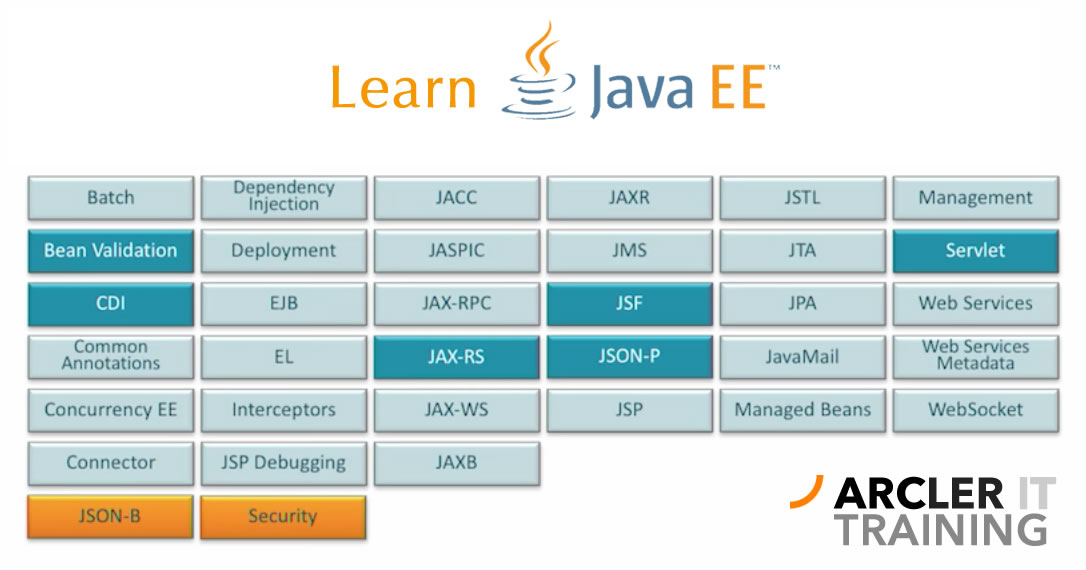Java Enterprise Edition has established itself as the distinguished platform for business web application and back-end developers. With this training, you can learn the essentials of Java EE, and start developing enterprise-class business applications. This code-focused course shows how to build a complete application covering the most essential Java EE specifications, and much more. You’ll start learning with Java Servlets and then how to use Java Server Faces to build interactive views, implement Enterprise Java Beans (EJB), Contexts and Dependency Injection (CDI), integrate Java Messaging Service to decouple your application, ensure data integrity with Bean Validation, create dynamic sites with WebSockets, how to interoperate Java EE applications with external services, and architectural best practices when building a Java EE application.
Course Features
- Lectures 71
- Quiz 0
- Duration 10 days
- Skill level All levels
- Students 3
- Assessments Self
- 12 Sections
- 71 Lessons
- 10 Days
- 1. Course Overview3
- 2. Introduction to Java EE2
- 3. Getting Started to Learning by Practice5
- 4. Web Tier - Part 114
- 4.1Web Tier Overview
- 4.2Introduction to Servlets
- 4.3Servlets by Specification
- 4.4Request & Response Lifecycle
- 4.5Developing your first Servlets
- 4.6Introduction to Java Server Pages (JSP)
- 4.7Writing your first JSP
- 4.8Using JSP with Servlets and Expression Language (EL)
- 4.9Java Standard Tag Library (JSTL)
- 4.10Custom Tag Libraries
- 4.11Advanced JSP, Servlet & JSTL Practice
- 4.12Servlet Filters and Wrappers
- 4.13Parallel Processing
- 4.14Security and Encyrption
- 5. Web Tier - Part 214
- 5.1MVC Overview
- 5.2Introduction to JSF
- 5.3Setting up a JSF Project
- 5.4Creating your first JSF Application
- 5.5Introduction to Managed Beans
- 5.6EL Revisited for JSF
- 5.7Introduction to Facelets and Templating
- 5.8JSF Navigation and Flows
- 5.9JSF LifeCycle
- 5.10JSF Components
- 5.11Handling User Input
- 5.12Handling Events from UI components
- 5.13AJAX with JSF
- 5.14Using PrimeFaces with JSF
- 6. Enterprise Java Beans (EJB)8
- 7. Java Persistence API (JPA) and Entity Beans7
- 8. Contexts and Dependency Injection (CDI)6
- 9. Java Messaging Service4
- 10. Interoperability using RESTful Web Services3
- 11. Some other Java EE APIs3
- 12. Next Steps2

